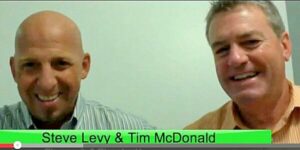
Telecommuting: 5 Ways Companies Benefit
Telecommuting success isn’t a slam dunk — but the business benefits can be significant. What should employers consider?

Telecommuting success isn’t a slam dunk — but the business benefits can be significant. What should employers consider?

It’s a very merry #TChatHoliday! See Tim McDonald and Kevin Grossman compare end-of-year notes in a brief hangout — and then share your own thoughts!

What does it take to be a leader others actually want to follow? Here are 5 ways any aspiring leader can move in the right direction

We all have those days when we need to face the music with our manager. But how can we make the most of a bad work situation?

Does professional networking feel like a burden? Lighten the load by planning ahead for these 5 key social scenarios

What’s the business value of positive psychology? Research suggests that it could be much more powerful in driving workplace performance than we think

This week, #TChat offers 3 ways to play! We marry old school with new tech, and hopefully advance workplace culture and practices for everyone

Are employers unintentionally losing competitive steam by overlooking talent that lives at the margins? Could a more inclusive world of work boost innovation?

TalentCulture is thrilled to be featured on Forbes List of “Best Websites For Your Career.” Why? In the spirit of lists everywhere, here are 3 reasons…

Competition in the workplace is unavoidable. How do you make the most of it, without letting it get the best of you?

Under what conditions do you perform best? If something is standing between you and your work “zone” it’s time for a work/life fit reality check…

Is “vacation” a vanishing breed? Even when we’re able to get away from work, our connections follow us. How can we disconnect and de-stress in a world that’s always “on”?
Originally posted by Crystal Miller on MonsterThinking Blog It’s something we’ve probably all heard at some point in our lives, one of those aphorisms that’s morphed
We had lunch last weekend with friends we had not seen for quite some time. My former co-worker’s spouse looked at me, as I was
(Editor’s Note: All of us in the TalentCulture community mourn the loss of our dear friend, brilliant colleague and mindful mentor, Judy Martin, who passed
How are you feeling about your job and your career? Finding it boring and unfulfilling? As your organization has cut costs and corners, do you
It takes time, effort and strategy to develop your body, mind or talents. Why not use the same approach to your profession? Here’s a start: 5 ways to boost career productivity and effectiveness…
(Editor’s Note: All of us in the TalentCulture community mourn the loss of our dear friend, brilliant colleague and mindful mentor, Judy Martin, who passed
No matter where you lie on the generational spectrum, you’ll probably agree that we’ve never faced more distractions–or more pressure to deliver results–than in the current business climate. So, how can companies achieve great results today, by focusing on improving employee engagement and commitment?
Are you a recent grad? Unemployed or Underemployed? Here are ideas for making the most of your summer “break” to prepare for the next step in your career and your life. Make your own day!
Advice from a work-life expert: Guidelines for managing your way through personal illness – and back to professional wholeness
Ending a year of workplace conversations with gratitude…